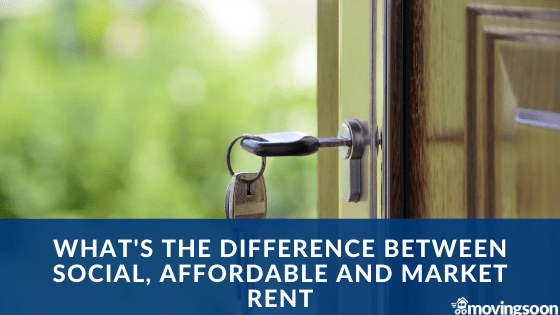We are going to explore the differences between social rent, affordable rent and market rent
The most common type of social housing is social rented homes, which are usually about 50% of the local market rent. Affordable rented homes are also available, these are usually around 80% of the local market rent or even lower. Market rental properties are those which do not have to fit an affordability criteria as such and are usually in the private rental sector.
If you are interested in affordable housing. We advertise social rent, affordable rent and some market rent properties that are affordable. This is based on the fact that the rentals for these properties is at or below the average rent figure in the UK. You can also set up property alerts and have access to an online moving house checklist.
Table of Contents
What is social rent?
According to government data around 17% 0f households live in social housing. This is around 3.9 million people.
Social rent is usually rent that is paid to registered providers and local authorities. It is low cost rent that is set by a government formula. This means it is significantly lower than the rent a tenant would pay in the normal market. Not everyone is eligible for social housing and so the next best alternative could be to aim for a provider that charges ‘affordable rent’.
What is Affordable rent (also called Intermediate Rent)?
Affordable rent is rent that is set at up to 80% of market rent (including service charges).These properties of affordable rents are defined as ‘low cost’ rental accommodation and and so also class as ‘social housing’. This means that they are regulated by the Regulator of Social Housing. This means that homes will remain more affordable than renting on the private rental market. You could argue that all rent should be ‘affordable’, but in this sense it means 80% of market rent.
What is market rent?
Market rent is the value in which landlords base their rent off. It is the value that they should be charging around for the property. For example, if it has been valued that a house should cost £600pm, this should be around the price that a landlord should charge. If this was an ‘affordable property’, you would see the price fall to at least £480pm. If the property was the price of social rent, it should be around £300. Obviously this is based off;
- The amount of beds the property has
- The area the property is in
- The outside space
As well as many other contributing factors.
Sometimes a landlord may charge way above what the market rent should be, but this can be disputed. If a landlord is charging what you deem and unreasonable amount, a tenant can apply to the tenancy tribunal asking for the rent to be reduced. This is most commonly seen in the Private Rental sector rather than councils or housing associations. This is because these housing providers base their rent on affordability.
According to government data around 19% 0f households live in market rent (private rent) accommodation. This is around 4.6 million people.
So, how do these rental models differ?
These obviously differ by the amount of rent that you pay to the landlord. You need to match specific criteria to be eligible for social housing. If you are not eligible for social housing, this doesn’t mean you will face rip off rents. Your rights do not differ because of the amount of rent that you pay. They also differ in the sense that market rent properties are usually on the private rental sector, with affordable and social rents being from housing providers and councils.
We have partnered with Quotezone.co.uk to help you save money on your insurance.
You could try looking at shared ownership houses as a different affordable housing option.
Find affordable housing, get money saving alerts and access to your own online moving house checklist.


